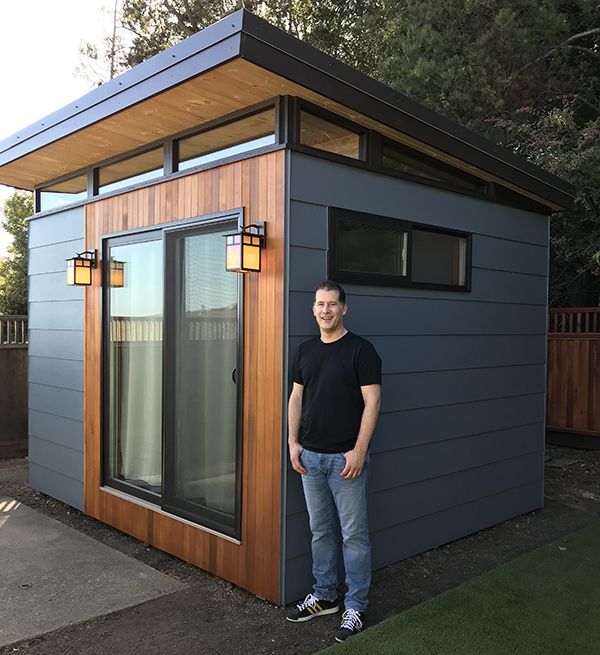AARP Hearing Center


When Kevin Yost began working from home last spring due to the pandemic, he set himself up at his San Francisco area home's dining room table. But with sensitive material on his laptop, he needed more privacy from his wife, who often worked from home, and two teenage children.
So Yost, 54, co-opted a corner of the living room. “I created a cardboard fortress with sheets for walls,” he says. “If I were 10 years old, all I'd need is beef jerky and chocolate milk and I'd be the happiest kid.”
But that was no way to conduct business for a professional video editor, so Yost began searching for a solution. He'd find the answer in his own backyard.
Coronavirus spurs interest


In the past few years, there's been a surge of homeowners building or renovating structures such as accessory dwelling units (or ADUs), sheds, garages, studios and other structures on their properties, says Kol Peterson an ADU expert. But the coronavirus has put that demand into overdrive.
People needing private spaces to work from home, like Yost, or those seeking to move older family members close by are taking a second look at their yards as places to find refuge or create a dwelling.
Tim Vack, general manager of Seattle-based Modern Shed, which makes small, stylish prefabricated standalone structures, reports that based on the number of phone calls, catalogues requested and web traffic, his company has seen “four times the interest” compared to the previous year.
Mike Koenig, president and cofounder of Studio Shed in Lewisville, Colorado, has seen similar numbers for his company, which makes sheds and ADUs. “We've seen our traffic for website visitors age 65 and older triple over the last year,” he says. “That's not normal.”





























































More on Home and Family
Free Resources to Aid Veterans, Military, Their Families Amid COVID-19 Outbreak
Check out where you can find support for your health and finances